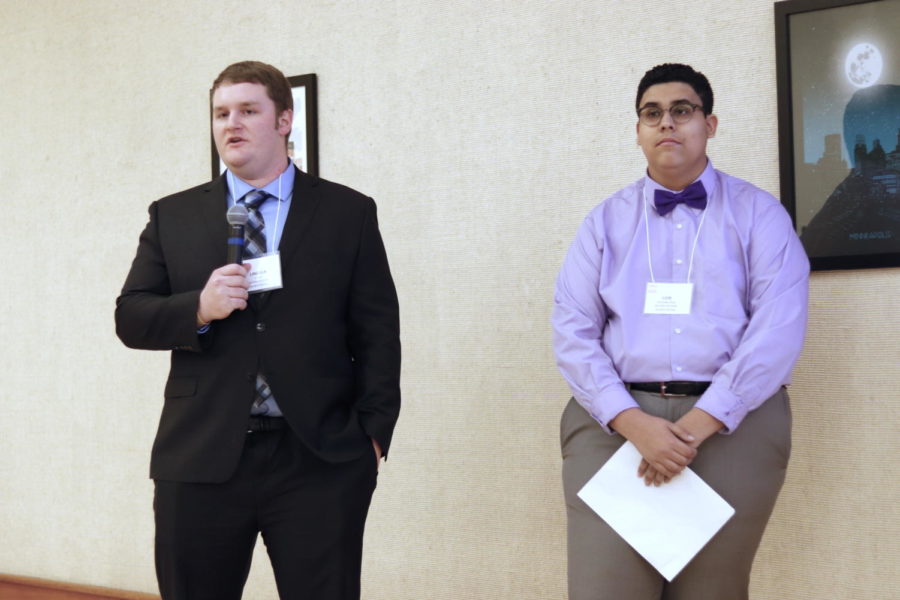10 to 10:50 a.m.: Students discuss U.S. prison systems as modern slavery at ISCORE
Lincoln Lutrick, senior in kinesiology and health and Luis Gonzalez, junior in political science present how the U.S. prison system is today’s slavery. The 2019 ISCORE Conference took place Friday at the Memorial Union.
February 24, 2019
Iowa State Students discussed mass incarceration and how United States Prison Systems are modern day slavery.
Carolina De Avila, senior in management information systems; Maria Fonseca, junior in graphic design; Lincoln Lutrick, senior in kinesiology and health; and Luis Gonzalez-Diaz, junior in political science, presented their research on this topic.
Gonzalez-Diaz presented a reflection question for attendees to discuss before the lecture, asking audience members to discuss with a neighbor what differences they see in the way white and black people are depicted in the media when they commit a crime.
Fonseca discussed the historical roots of how prison was able to become the new form of slavery. Post slavery, Fonseca said, a loophole in the 13th Amendment stating that slavery as a punishment for crime would still be allowed, was abused.
African American people, Fonseca said, were heavily criminalized and disproportionately arrested for little to no reason, so that economies that depended on the free labor of slavery were able to continue.
Nixon’s war on drugs disproportionately targeted African American communities, Fonseca said. Time spent in prison for crack cocaine was exponentially higher than sentences for possession of powdered cocaine. Because African American communities more often used crack cocaine, and white communities more frequently used powdered cocaine, Fonseca said these policies furthered the disproportionate incarceration and criminalization of African Americans.
People who have been imprisoned are more likely to become suicidal and incarcerated again, De Avila said, due to the poor mental state that incarceration leaves prisoners in. Anxiety, paranoia, perceptual disturbances and depression, De Avila said, was caused in part by overcrowding and poor prison conditions, raising baseline levels of stress by approximately 20 to 30 percent.
The effects of incarceration of African American men on families is exponentially higher, and can cause anxiety and depression in children, as well as families oftentimes losing their main source of income, De Avila said.
Lutrick said roughly 133,000 inmates are held in privately owned prisons, but due to less heavy regulations, inmate safety is compromised.
In the prison industry, Lutrick said, prisoners make between $0.14 and 0.63 per day when working non industrial labor, or labor which takes place within the prison. Prisoners make $0.33 to 1.41 a day for industrial labor, which takes place outside of prisons.
Iowa State, as well as other public institutions often use prison industries, as government facilities are required to find the cheapest labor sources they can, said Lutrick.
While the First Step bill allows inmates to reduce their sentences through work programs, Lutrick said the law only offers a pathway for first time offenders.
Gonzalez-Diaz said providing equity and increased access to resources and education are potential solutions to help combat the mass incarceration of African American populations.
A continued focus on treatment and rehabilitation rather than incarceration and imprisonment, Gonzalez-Diaz said, as well as a reframing on the war on drugs would be a way to continue to lower rates of mass incarceration of African Americans.
The application and implementation of racial equity focused on anti racist laws surrounding incarceration, Gonzalez-Diaz said, would combat the disproportionate incarceration of African Americans.







